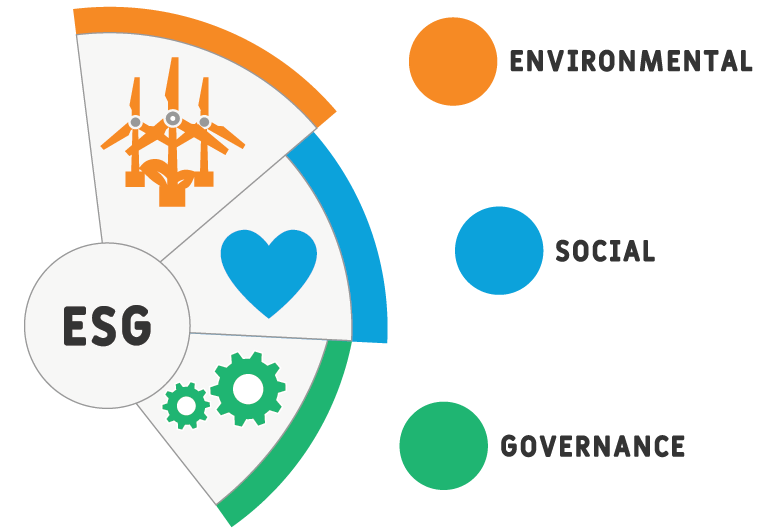ESG has exploded in importance over the last two years. As the topic receives more press coverage, it weighs heavily on companies’ decisions and policies and is taking a more central role in how consumers and investors view businesses and their value.
ESG stands for environmental, social, and governance and refers to how well a company’s business model encourages sustainability and minimizes its negative environmental and societal impact. ESG is a data-driven approach that measures how well a company performs in its efforts to reduce carbon emissions, promote workplace safety, and prevent corruption in the company’s leadership and structure. The aim is to reveal key performance indicators (KPIs) on people management and environmental performance — a story that goes a step further than just revenues and the balance sheet.
The importance of ESG has been building, but the question is: Why has it recently taken center stage? Media coverage of ESG investment increased by 75% in 2020 over 2019. ESG investment funds received $51.1 billion of net new money from investors in 2020, more than double the previous year. ESG is gaining more and more attention each year.
We’ve outlined 3 drivers that have pushed ESG to the forefront and why it’s here to stay.
- Rise in acceptance of climate change
- Logistical COVID-19 effects on ESG
- Global economic and financial instability
1. Rise in acceptance of climate change
The meteoric rise in importance of ESG can be partly attributed to a greater emphasis on the “E” (environmental) in recent years. Reducing waste, limiting our dependence on dwindling resources, and lowering greenhouse gas emissions have become necessities for companies as investors, consumers and the general population have accepted the fact that climate change is happening.
It follows that if climate change is happening and it’s a major threat, then businesses as well as individuals should be doing their part to fight it and prepare for it. And as these surveys from 2019 show, majorities in 23 of 26 surveyed countries believe that global climate change is a major threat to their nations. In 13 of those countries, climate change is viewed as the primary threat to their nations.
“. . . majorities in 23 of 26 surveyed countries believe that global climate change is a major threat to their nations.”
If a majority of the population views climate change as real and as a major threat, then the importance of ESG rises sharply. A study from GreenPrint conducted in March 2021 found that 64% of Americans are willing to pay more for sustainable products and 78% of people are more likely to buy a product if it’s clearly labeled as environmentally friendly. A company’s environmental policy is now a huge factor in whether they can achieve success.
2. How COVID-19 affected ESG
The COVID-19 pandemic has brought companies’ ESG policies into sharp focus. According to JP Morgan, the pandemic has highlighted the importance of the social and governance aspects of ESG, and companies with a more long-term focus have had greater resilience during the crisis. How businesses deal with employees, handle their customers and manage their supply chains all fall under the umbrella of ESG.
Companies that had already developed a strong remote work culture and infrastructure, sensible sick leave policies, cyber security measures and other positive ESG policies could better respond to the pandemic. This is relevant because how well a business responded to the abrupt changes brought on by COVID-19 may be a good indication for how they will respond to the longer term disruptions brought on by global climate change.
In any case, COVID-19 has accelerated the way investors, consumers and employees value a company’s ESG policies and commitment.
3. Global economic and financial instability
The COVID-19 pandemic destabilized global economic systems and financial markets. It brought mass unemployment, forced thousands of businesses to close, and sent investors scrambling as they tried to predict which companies would weather the storm and which wouldn’t make it. The pandemic served as a reminder that real world events and crises are directly related to both Wall Street and Main Street.

What the recent instability means for ESG is that investors are taking it even more seriously moving forward. As climate change advances, we can expect an increasing number of crises and disasters, from wildfires to hurricanes to sweltering heat waves. All of these will put a strain on companies’ resources, supply chains, and employees.
Organizations with successful ESG policies will be better equipped to take on future events. For example, companies that recycle their waste and use recycled, repurposed, or recovered materials will be less dependent on large, costly, and potentially vulnerable supply chains to acquire new resources and materials. Businesses that embrace ESG by doing things like limiting reliance on depleted resources, having a flexible workforce that can handle abrupt changes, and creating closed loop production processes will be able to overcome crises and be more attractive to investors.
Hit ESG targets, or you don’t get to borrow
There’s a strategic shift taking place in which companies that don’t embrace ESG don’t gain access to the capital they need. According to Bloomberg, from January through May 2021, there were $52 billion dollars in U.S. loans that had terms tied to ESG policies and targets. That’s a 292% increase in volume compared to all of 2020. Large investment banks are rewarding companies that commit to positive environmental, social and governance policies.
To survive, every corporation must find a way to be sustainable; offer excellent, inclusive working conditions; and be adaptable, while also remaining financially viable. If organizations can not make this happen, then they’ll end up paying far more to borrow money.
So, is ESG here to stay?
ESG has exploded across the headlines in recent years. But businesses and investors alike may be wondering whether it’s here to stay for the long term and are hesitant to commit resources to something that might be a passing fad. However, all signs indicate that the importance of ESG is here to stay. According to Bank of America, $4 of every $10 of global equity inflows go to ESG. There was also a 96% increase in sustainable asset investment by mutual funds and exchange traded funds in 2020 compared to 2019. It’s difficult to argue with these huge numbers.
If banks, investors, and consumers are all placing a premium on ESG, then it is likely here to stay.
How your company can get started
The first step toward improving ESG is taking an honest look at your current processes and policies. You have to identify opportunities for improvement in resource use, business model, infrastructure, work and employee structures, and more. With regards specifically to the “E” in ESG, adopting a more circular model may be the best way to move forward.
It’s important to remember that you can take steps to become more circular, sustainable and ESG friendly without completely changing your business overnight. It’s an attainable goal for any organization, and there are resources out there that can help. For more information on circular business models and how to successfully implement them, download our free ebook


